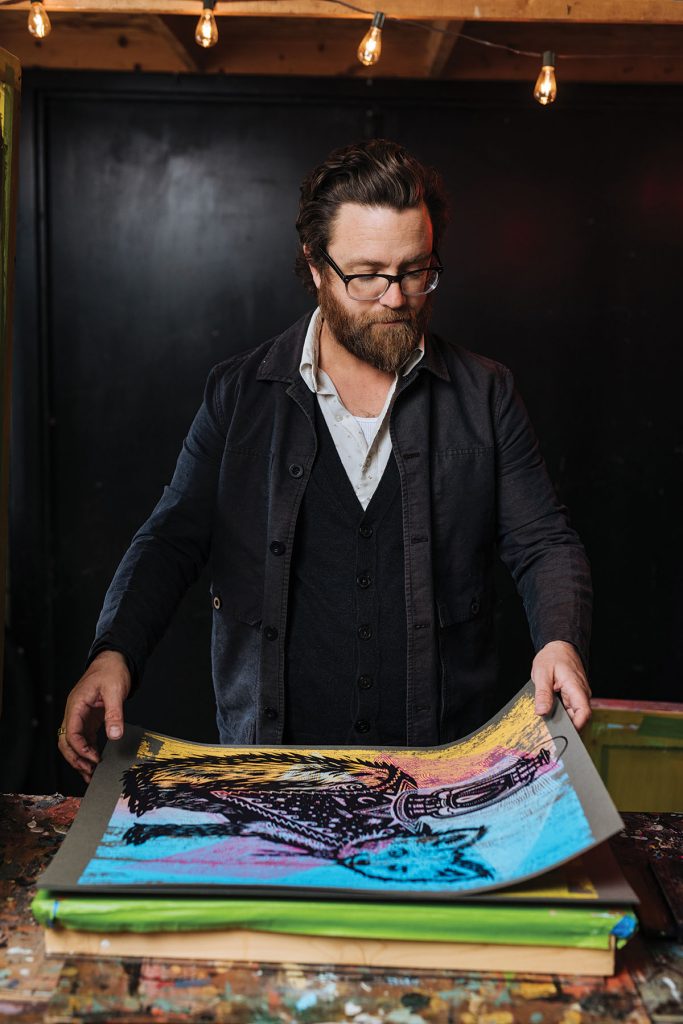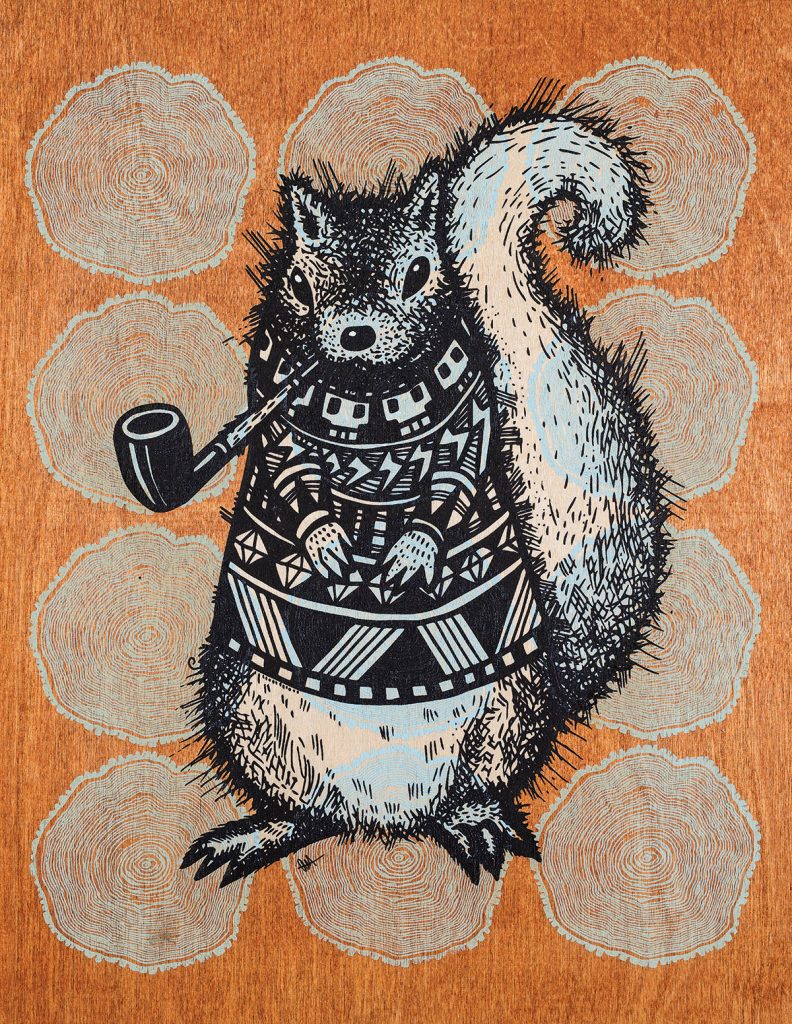
Portrait by William Crooks
You’ve seen her before, the giant version, in a cosmic blue mural on the side of Cotton Mill Studios: Qué Linda! Open the door to Andy Herod’s gallery space at the warehouse venue and you’re met with the friendly sound of prancing paws as his beloved dog, the real Linda, trots up to greet you.
Inside, little Linda is surrounded by a host of other little animals — quirky creatures screenprinted against psychedelic backgrounds on metal, paper, and wood. “Sometimes it starts as a doodle,” says Herod. “Like the squirrel with the pipe. It was literally just something I drew while watching a movie, and that’s probably been my biggest [seller].”

Photo by William Crooks
A different rendition of Linda was actually one of the first drawings Herod pressed to screenprint. In it, an ornate shawl drapes from her head, giving her a saintly air. Another, titled “The Writer” depicts an otter with a distant look in his eye sitting behind a typewriter in a small skiff, a bottle of booze by his side. “The otter is basically drinking himself to death on a boat,” Herod explains with a laugh. “As cute and as silly as these are, there’s a little edge in there, and some people are challenged by it. I like that aspect of it. I don’t want it to be too cute.” (He also does the artwork and branding for Daidala Cider.)
Herod didn’t start making art professionally until 2012. After spending most of his time in Chapel Hill fronting the band the Comas, he did a stint in New York before moving to Asheville and starting his project Electric Owls, landing his music in soundtracks and commercials. Guided by YouTube videos, he taught himself to screenprint so he could make cheap merchandise for the band.

Portrait by William Crooks

Photo by William Crooks
That kind of music-for-marketing approach seems to inform much of the way he’s come to approach creative work, as well. He recently found himself shifting from pen-and-ink drawings to iPad-based constructions, a technique he ironically finds more organic.

Photo by William Crooks
“A lot of times a painter will do an oil painting, then digitize it, and people will buy prints of that digitally. So they took this beautiful, real thing and turned it into a digital product. Whereas I draw them digitally and then they wind up in an analog piece, like a painting, which I think is cool.” He philosophizes, “You can pretty much whittle that down to say that’s all reality is. Everything we see is kind of an interpretation in our brain of the actual thing. Who knows what it actually looks like?”

Photo by William Crooks
That process also allows Herod to think bigger, printing on massive boards, or, as is the case on the murals out front, entire walls. Those outsized projects, painted with the help of muralist Ian Wilkinson, served as Herod’s first foray into large-scale work. But the experience seems to have planted the bug for further grandeur. “These walls were my first real introduction into spray cans,” he says. “I want to explore more.”
Andy Herod, Cotton Mill Studios, 122 Riverside Drive Studio A in the River Arts District. Herod’s studio doubles as a small bar that sells beer, wine, and cider (it’s the official taproom for Daidala Cider), open Wednesday through Sunday, 12-8pm. His work is also carried by Horse + Hero, 14 Patton Ave. in downtown Asheville, horse-hero.myshopify.com. For more information, see andyherod.com.